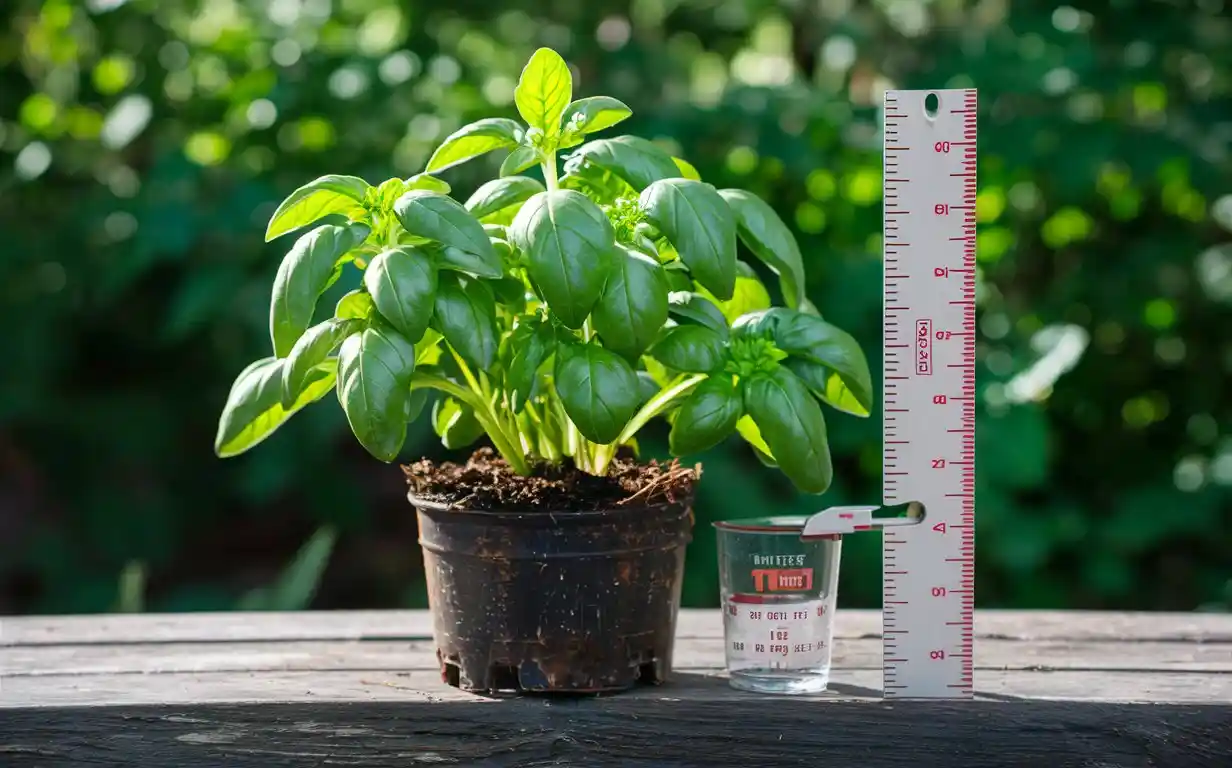How Much Water Does Basil Need?
Basil is a thirsty plant that requires regular watering. During the hot summer months, basil plants may need to be watered daily, especially if they are planted in containers. When watering basil, it is important to soak the soil thoroughly and then allow the top inch of soil to dry out before watering again. Overwatering can lead to root rot, so it is important to avoid soggy soil.
Watering Basil Plants
Basil, a beloved herb in many culinary traditions, requires specific watering practices to thrive. I will delve into the intricacies of basil watering, providing you with the essential knowledge to cultivate healthy and vibrant basil plants.
Basil prefers consistently moist soil, but not waterlogged conditions. Overwatering can lead to root rot and other problems, while underwatering can cause wilting and stunted growth. Finding the right balance is crucial for optimal basil growth.
In this comprehensive guide, I will explore the following aspects of basil watering:
- How much water does basil need?
- When is the best time to water basil?
- What are the signs of overwatering and underwatering basil?
- How to troubleshoot common basil watering issues
By understanding the specific water requirements of basil, you can provide your plants with the optimal conditions they need to flourish and produce an abundance of flavorful leaves.
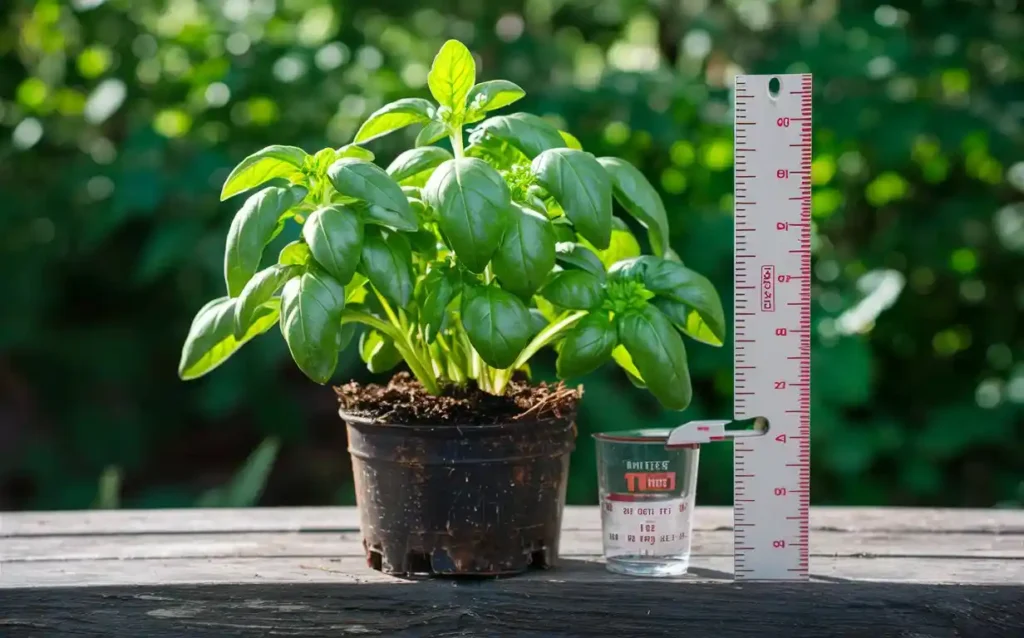
How Much Water for Basil
Basil plants have moderate water requirements and prefer consistently moist soil. The amount of water they need varies depending on factors such as the weather, soil type, and plant size. In general, basil plants need about 1 inch of water per week, but this may need to be adjusted based on the specific conditions.
During hot, dry weather, basil plants may need to be watered more frequently, up to 2 inches of water per week. If the soil is sandy or well-draining, it will need to be watered more often than if it is clay or loam. Larger basil plants will also need more water than smaller plants.
It is important to avoid overwatering basil plants, as this can lead to root rot and other problems. The best way to determine if a basil plant needs water is to check the soil moisture. If the top inch of soil is dry, it is time to water the plant.

Basil Irrigation
Basil plants can be grown using a variety of irrigation methods, including hand watering, drip irrigation, and soaker hoses. Each method has its advantages and disadvantages, so it is important to choose the one that best suits your needs and growing conditions.
Hand watering is the most basic method of irrigation and involves using a watering can or hose to apply water directly to the soil around the plants. This method is simple and inexpensive, but it can be time-consuming and labor-intensive, especially if you have a large number of plants. Hand watering also requires careful attention to ensure that the water is evenly distributed and that the soil is not overwatered.
Drip irrigation is a more efficient method of irrigation that delivers water directly to the roots of the plants. This method uses a network of pipes and emitters to deliver a slow and steady stream of water to the soil. Drip irrigation is more expensive to install than hand watering, but it can save water and time in the long run. It is also less likely to cause overwatering or underwatering, as the water is delivered directly to the roots.
Soaker hoses are a type of drip irrigation that uses a porous hose to deliver water to the soil. Soaker hoses are less expensive than drip irrigation systems, but they are not as efficient. They also require more frequent monitoring to ensure that the water is evenly distributed.
Regardless of the irrigation method you choose, it is important to water your basil plants regularly and deeply. Basil plants need about 1 inch of water per week, but this amount may vary depending on the weather conditions and the size of the plants. Water the plants in the morning so that the leaves have time to dry before nightfall. Avoid overwatering, as this can lead to root rot and other problems.
Basil Watering Schedule
Determining the ideal watering schedule for basil depends on various factors, including the weather, soil conditions, and the stage of growth of the plant. As a general guideline, basil plants should be watered when the top inch of soil feels dry to the touch. During hot, dry weather, you may need to water your basil plants more frequently, perhaps every day or every other day. In cooler, wetter weather, you may only need to water your basil plants once or twice a week.
It’s important to avoid overwatering basil plants, as this can lead to root rot and other problems. If you’re not sure whether your basil plant needs water, it’s best to err on the side of caution and wait a day or two before watering it again.
Here is a general watering schedule for basil plants:
- Seedlings: Water seedlings regularly, keeping the soil moist but not soggy.
- Young plants: Water young plants every day or every other day, depending on the weather.
- Mature plants: Water mature plants once or twice a week, depending on the weather.
Remember, these are just general guidelines. The best way to determine how often to water your basil plants is to pay attention to the plant itself. If the leaves are wilting or turning yellow, it’s a sign that the plant needs more water. If the leaves are turning brown or crispy, it’s a sign that the plant is being overwatered.
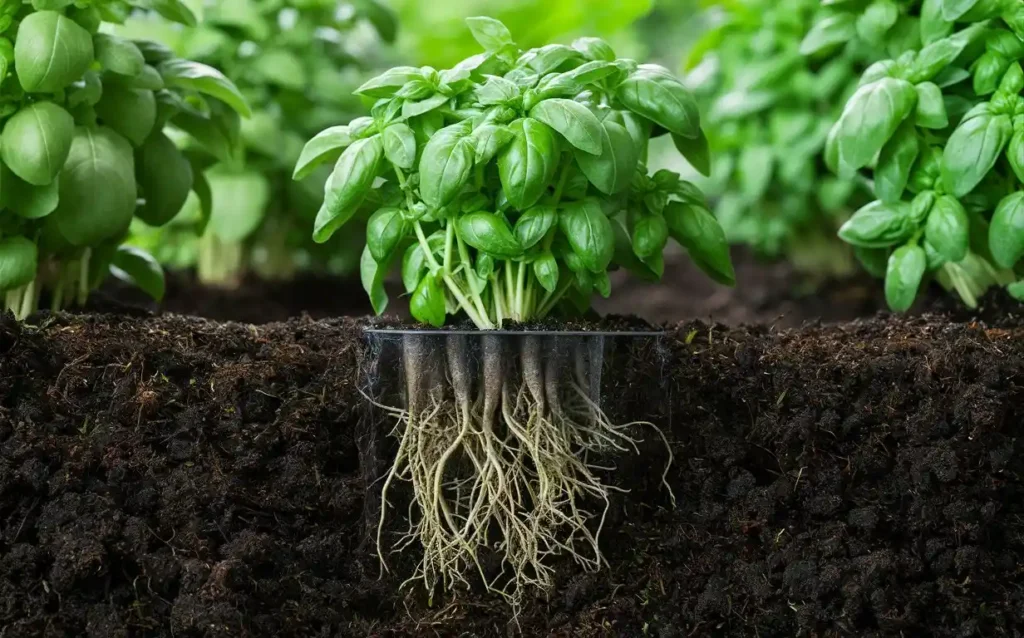
Basil Water Requirements
Basil plants have specific water requirements that must be met to ensure their optimal growth and productivity. The amount of water needed depends on several factors, including the plant’s size, the climate, and the soil conditions.
Generally, basil plants prefer well-drained soil kept consistently moist but not waterlogged. Overwatering can lead to root rot and other problems, while underwatering can cause the plant to wilt and become stressed.
During the hot summer months, basil plants may need to be watered daily or even twice a day, especially if they are grown in containers. In cooler weather, watering can be reduced to every few days or even once a week, depending on the rainfall.
To determine if your basil plant needs water, check the soil moisture level. Stick your finger about an inch into the soil. If the soil feels dry to the touch, it’s time to water the plant.
When watering basil plants, it’s best to water deeply and infrequently rather than shallowly and frequently. This encourages the roots to grow deep into the soil, making the plant more drought-tolerant.
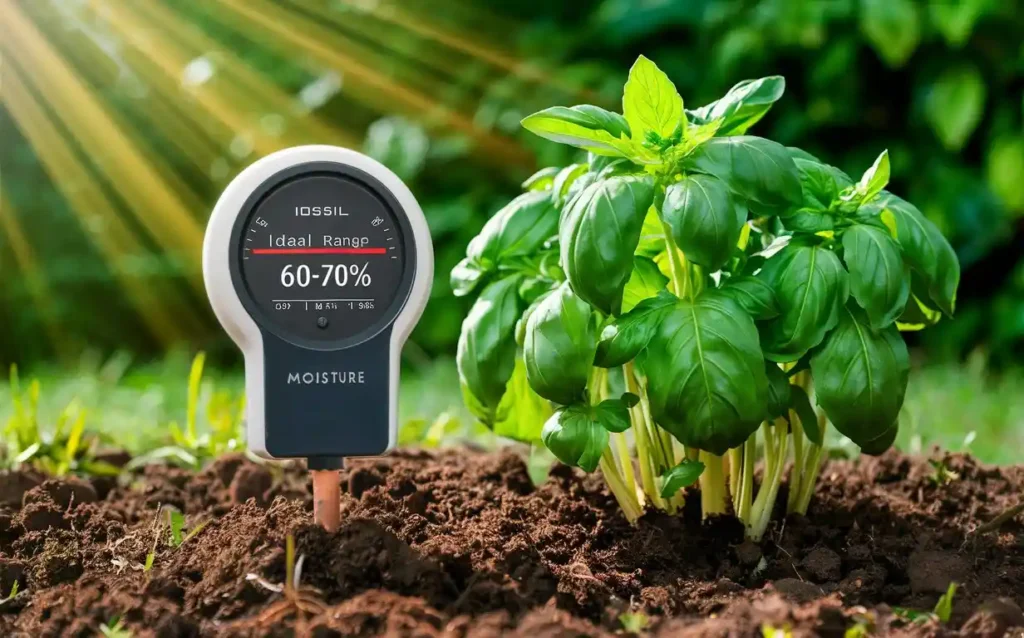
Soil Moisture for Basil
Basil prefers well-drained soil that retains moisture but does not become waterlogged. The ideal soil moisture level for basil is around 60-70%. To check the soil moisture, insert your finger about 2 inches deep into the soil. If the soil feels slightly moist but not soggy, it is at the optimal moisture level for basil.
If the soil is too dry, basil plants will show signs of wilting, such as drooping leaves and brown leaf tips. If the soil is too wet, basil plants may develop root rot, which can cause the leaves to turn yellow and fall off. To prevent these problems, it is important to water basil plants regularly and to ensure that the soil is well-drained.
Here are some tips for maintaining the ideal soil moisture level for basil:
- Use a well-draining potting mix or soil amendment.
- Water basil plants deeply and less frequently, rather than shallowly and more often.
- Check the soil moisture regularly, especially during hot or dry weather.
- Mulch around basil plants to help retain moisture and suppress weeds.
- Avoid overwatering basil plants, as this can lead to root rot.
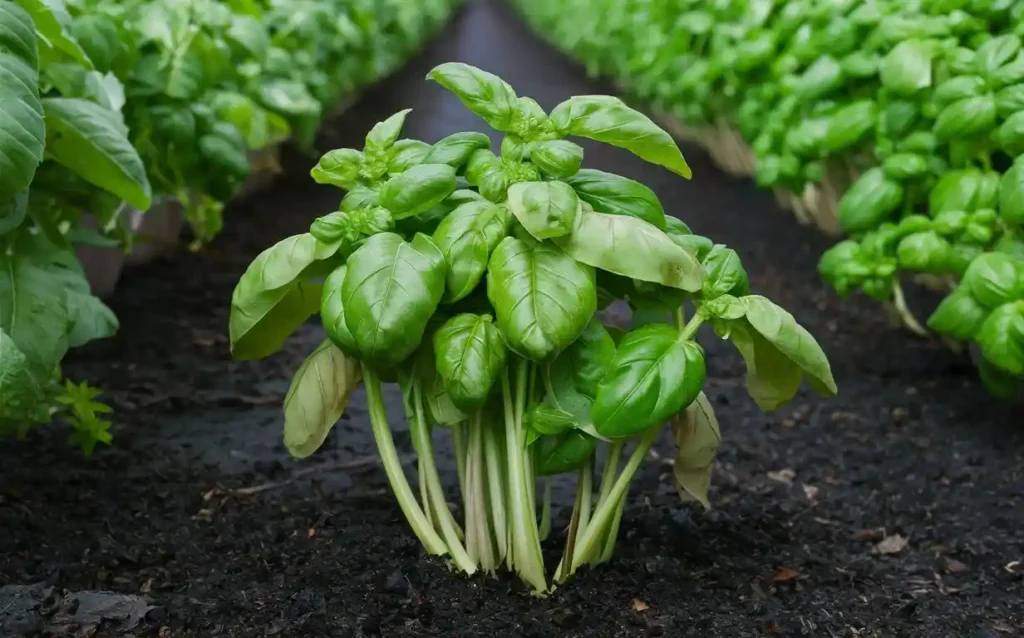
Signs of Overwatering Basil
Overwatering is a common problem for basil plants, especially in poorly drained soil. When basil plants receive too much water, their roots can become waterlogged and unable to absorb oxygen. This can lead to several problems, including:
- Yellowing leaves: Overwatering can cause the leaves of basil plants to turn yellow and fall off.
- Wilting: Basil plants that are overwatered may wilt and become limp.
- Stunted growth: Overwatering can stunt the growth of basil plants.
- Root rot: In severe cases, overwatering can lead to root rot, which can kill the plant.
If you think your basil plants are being overwatered, reduce the amount of water you are giving them and allow the soil to dry out between waterings. You can also improve drainage by adding organic matter to the soil or by planting basil in raised beds.
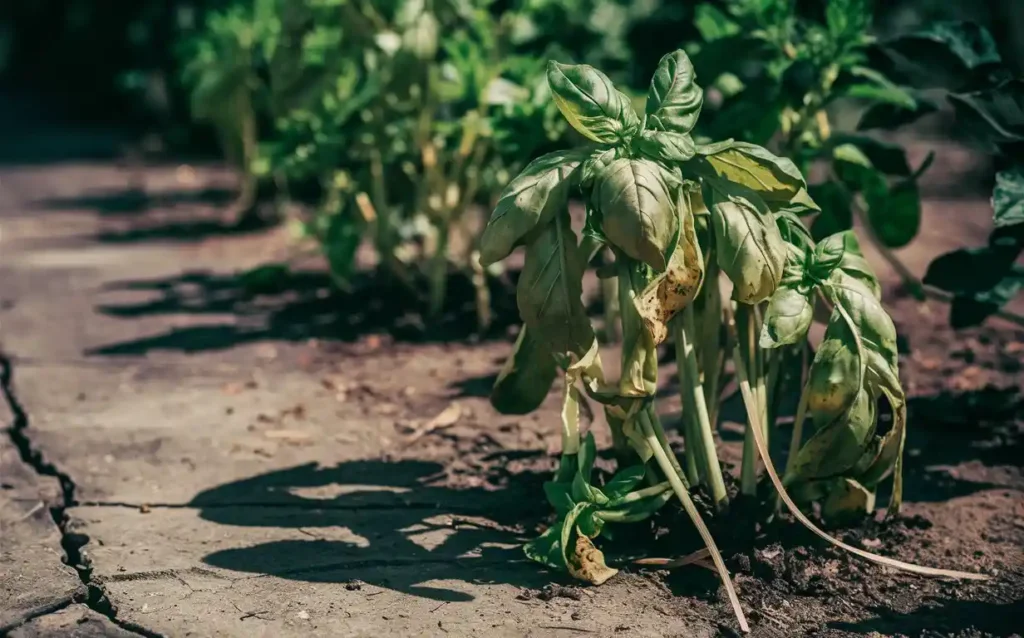
Signs of Underwatering Basil
Basil plants that are not receiving enough water will exhibit several telltale signs. These include:
- Wilting leaves: The leaves of underwatered basil plants will become limp and droopy, losing their rigidity and vibrant green color.
- Yellowing leaves: As the plant continues to suffer from water deprivation, the leaves may start to turn yellow, indicating a lack of chlorophyll production.
- Stunted growth: Basil plants that are not receiving adequate water will have stunted growth, with smaller leaves and shorter stems.
- Dry soil: The soil around the basil plant will be dry to the touch, even at a depth of several inches.
- Leaf drop: In severe cases of underwatering, the basil plant may start to shed its leaves in an attempt to conserve moisture.
It’s important to note that these signs can also be indicative of other problems, such as nutrient deficiencies or pests. Therefore, it’s essential to carefully observe the plant and consider other factors before concluding that underwatering is the cause.
Tips for Watering Basil
Here are some additional tips for watering basil plants:
- Water deeply and infrequently. Basil plants prefer to receive a deep watering once or twice a week, rather than frequent shallow watering. This allows the roots to grow deep and strong and helps to prevent the soil from becoming waterlogged.
- Use a watering can or hose with a gentle spray. Avoid using a strong stream of water, as this can damage the delicate leaves of the basil plant.
- Water at the base of the plant. Avoid getting the leaves wet, as this can promote disease.
- Mulch around the basil plants. A layer of mulch helps to retain moisture in the soil and suppress weeds.
- Be mindful of the weather. Basil plants need more water during hot, dry weather. Reduce watering during cool, wet weather.
- Check the soil moisture before watering. Stick your finger in the soil to check if it is dry to the touch. If it is, it is time to water the plant.
- Don’t overwater. Overwatering is one of the most common mistakes made when growing basil. Allow the soil to dry out slightly between watering.
Troubleshooting Basil Watering Issues
If you’re experiencing problems with your basil plants, such as wilting, yellowing leaves, or stunted growth, it’s important to troubleshoot the issue to determine the cause and find a solution.
Overwatering: Basil plants are susceptible to overwatering, which can lead to root rot and other problems. If you suspect that your basil is being overwatered, reduce the frequency and amount of watering. Allow the soil to dry out slightly between watering sessions, and check the drainage of your pots or garden beds to ensure that excess water can escape.
Underwatering: Basil plants also need adequate water to thrive. If you suspect that your basil is being underwatered, increase the frequency and amount of watering. Water deeply and regularly, especially during hot and dry weather. Check the soil moisture regularly to ensure that the roots are receiving enough water.
Other factors: In addition to watering issues, other factors can also affect the health of basil plants. These include nutrient deficiencies, pests, diseases, and environmental stress. If you’re unable to resolve the issue by adjusting your watering practices, it’s recommended to consult with a gardening expert or plant pathologist for further assistance.
FAQs
How often should I water my basil plant?
Basil plants should be watered deeply and regularly, allowing the soil to dry out slightly between waterings. The frequency of watering will vary depending on factors such as the weather, the size of the plant, and the type of soil.
What are the signs of overwatering basil?
The signs of overwatering basil include yellowing leaves, wilting or drooping leaves, soft, mushy stems, root rot, and fungal diseases.
What are the signs of underwatering basil?
The signs of underwatering basil include dry, crispy leaves, curling or wilting leaves, stunted growth, yellowing or browning leaves, and leaf drop.
How can I prevent overwatering and underwatering basil?
To prevent overwatering and underwatering basil, it is important to check the soil moisture before watering. Insert your finger into the soil up to the first knuckle. If the soil feels dry, it’s time to water. You can also use a moisture meter to measure the soil moisture.
What is the best way to water basil?
The best way to water basil is to water deeply and regularly, allowing the soil to dry out slightly between waterings. Water at the base of the plant, avoiding the leaves. You can use a soaker hose, drip irrigation system, or hand watering. Mulching around basil plants can help retain moisture and reduce evaporation.
